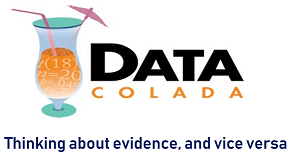In this installment of Data Replicada, we report on Study 3 of a recently published Journal of Consumer Research article entitled, “Does Curiosity Tempt Indulgence?” (.htm). In that study, participants were induced to feel curious or not and then were asked to (hypothetically) choose between two gym memberships, one for a “normal” gym and one…
[84] Data Replicada #3: Does Self-Concept Uncertainty Influence Magazine Subscription Choice?
In the third installment of Data Replicada, we report our attempt to replicate a recently published Journal of Consumer Research (JCR) article entitled, “The Uncertain Self: How Self-Concept Structure Affects Subscription Choice” (.htm). The central theory in the paper can be expressed in the following way: If you are uncertain about your own self-concept, then…
[83] Data Replicada #2: Do Self-Construal and Group Size Influence How People Make Choices on Behalf of a Group?
In this second installment of Data Replicada, we report two attempts to replicate a study in a recently published Journal of Consumer Research (JCR) article entitled, “Wine for the Table: Self-Construal, Group Size, and Choice for Self and Others” (.htm). Imagine that you are in a monthly book club and it is your job to…
[82] Data Replicada #1: Do Elevated Viewpoints Increase Risk Taking?
In this post, we report our attempt to replicate a study in a recently published Journal of Marketing Research (JMR) article entitled, “Having Control Over and Above Situations: The Influence of Elevated Viewpoints on Risk Taking” (.htm). The article’s abstract summarizes the key result: “consumers’ views of scenery from a high physical elevation induce an…
[81] Data Replicada
With more than mild trepidation, we are introducing a new column called Data Replicada. In this column, we will report the results of exact (or close) preregistered replications of recently published findings. Anyone who has been paying attention will have noticed that the publication of exact (or close) replications has become increasingly common. So why…
[80] Interaction Effects Need Interaction Controls
In a recent referee report I argued something I have argued in several reports before: if the effect of interest in a regression is an interaction, the control variables addressing possible confounds should be interactions as well. In this post I explain that argument using as a working example a 2011 QJE paper (.htm) that…
[79] Experimentation Aversion: Reconciling the Evidence
A PNAS paper (.htm) proposed that people object “to experiments that compare two unobjectionable policies” (their title). In our own work (.htm), we arrive at the opposite conclusion: people “don’t dislike a corporate experiment more than they dislike its worst condition” (our title). In a forthcoming PNAS letter, we identified a problem with the statistical…
[78c] Bayes Factors in Ten Recent Psych Science Papers
For this post, the third in a series on Bayes factors (.htm), I wanted to get a sense for how Bayes factors were being used with real data from real papers, so I looked at the 10 most recent empirical papers in Psychological Science containing the phrase "Bayes factor" (.zip). After browsing them all, I…
[78b] Hyp-Chart, the Missing Link Between P-values and Bayes Factors
Just two steps are needed to go from computing p-values to computing Bayes factors. This post explains both steps and introduces Hyp-Chart, the missing link we arrive at if we take only the first step. Hyp-Chart is a graph that shows how well the data fit the null vs. every possible alternative hypothesis [1]. Hyp-Chart…
[78a] If you think p-values are problematic, wait until you understand Bayes Factors
Would raising the minimum wage by $4 lead to greater unemployment? Milton, a Chicago economist, has a theory (supply and demand) that says so. Milton believes the causal effect is anywhere between 1% and 10%. After the minimum wage increase of $4, unemployment goes up 1%. Milton feels bad about the unemployed but good about…
